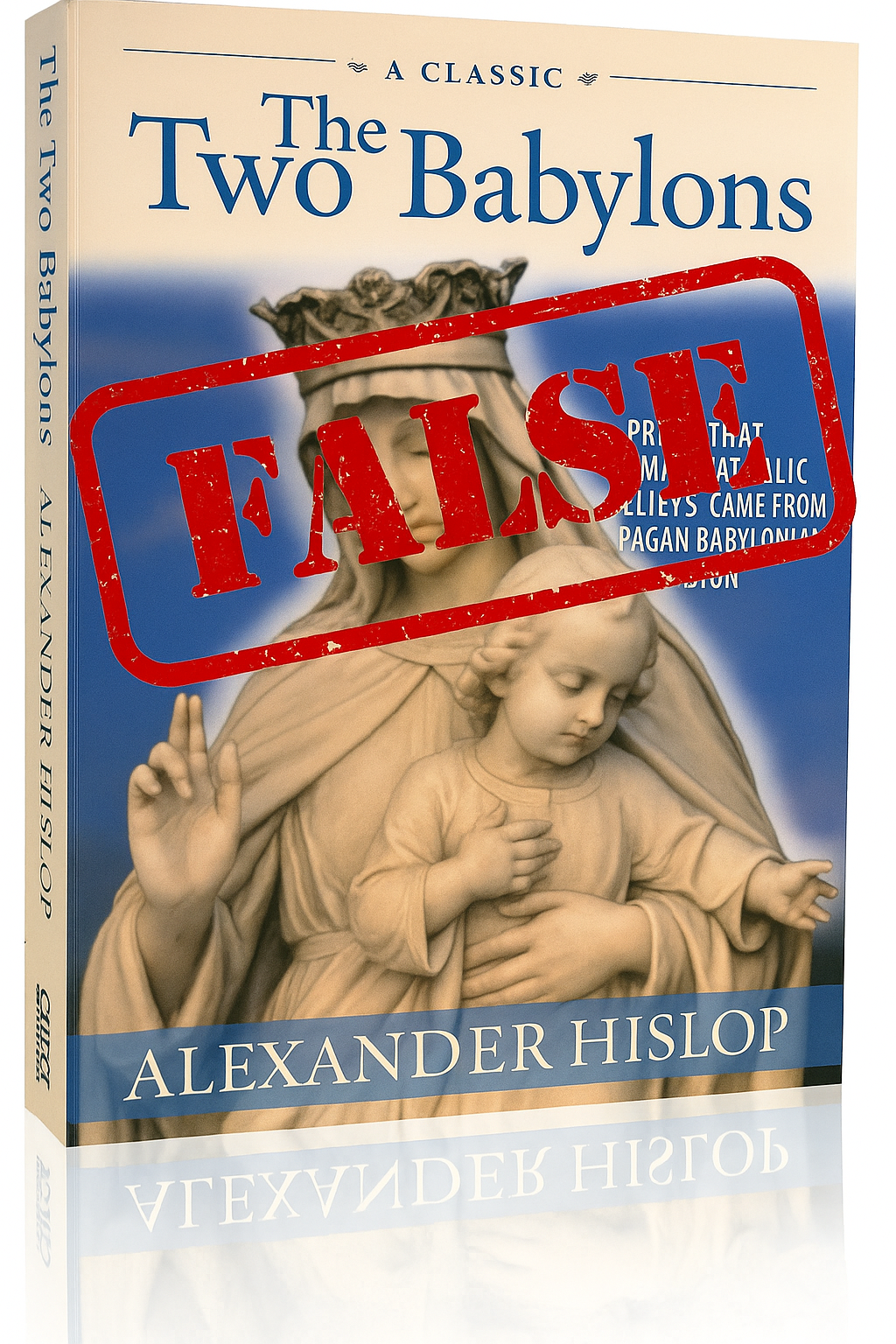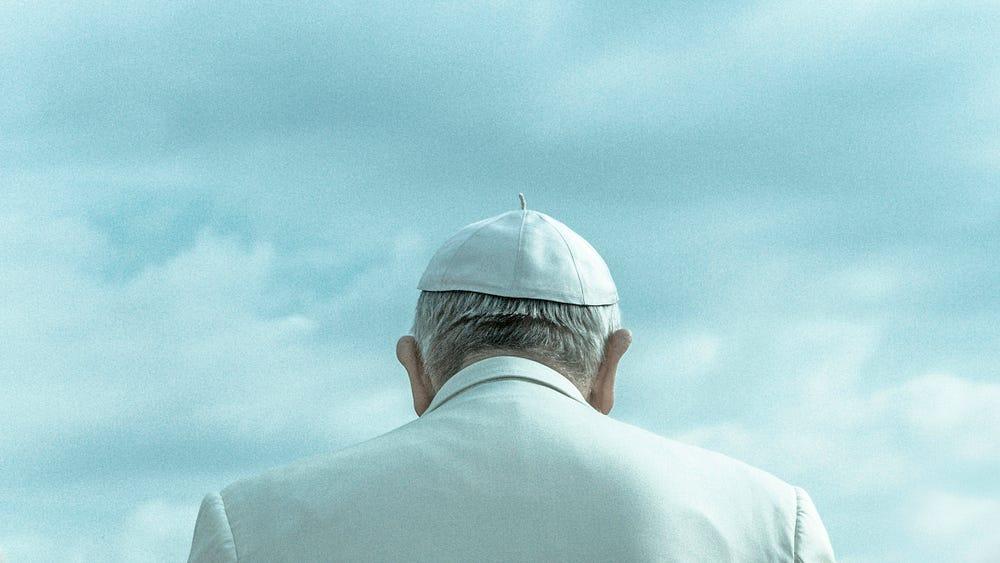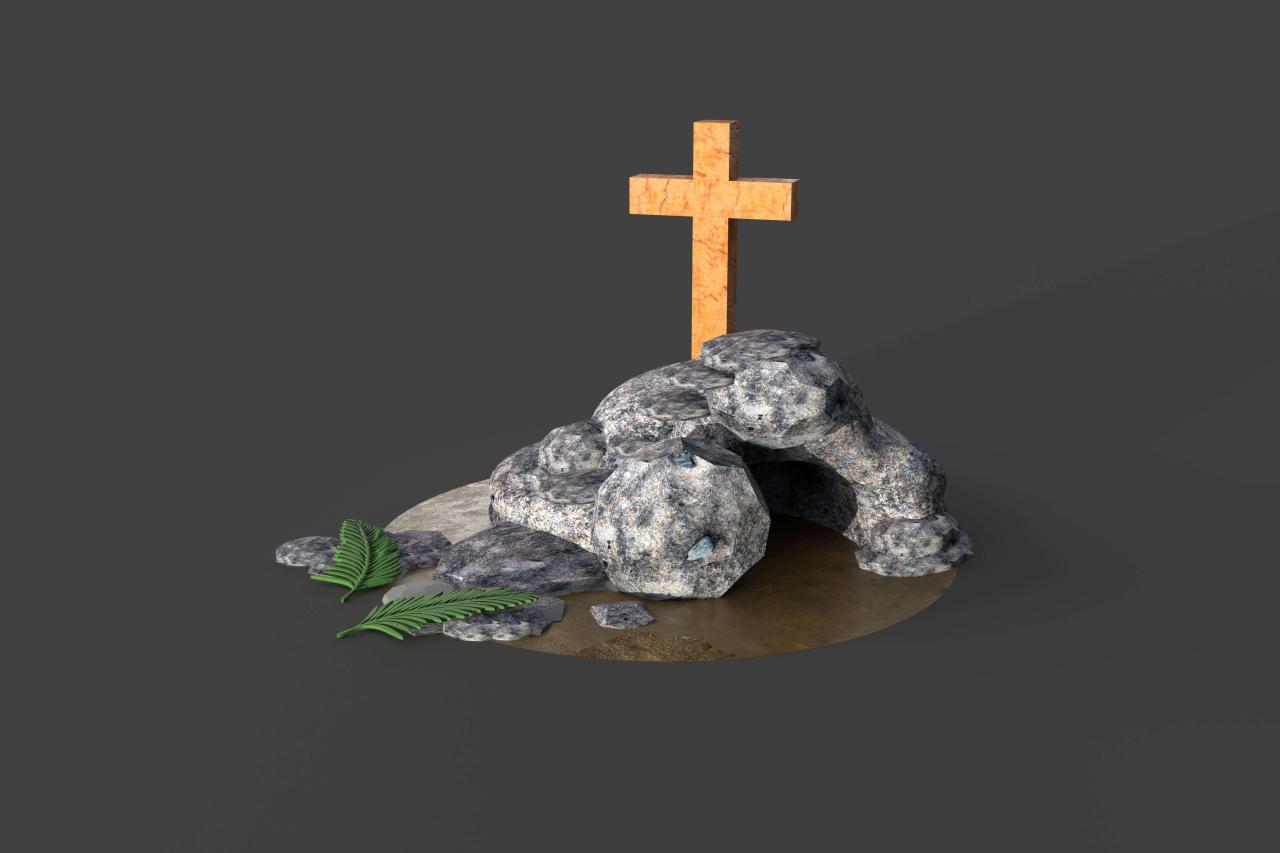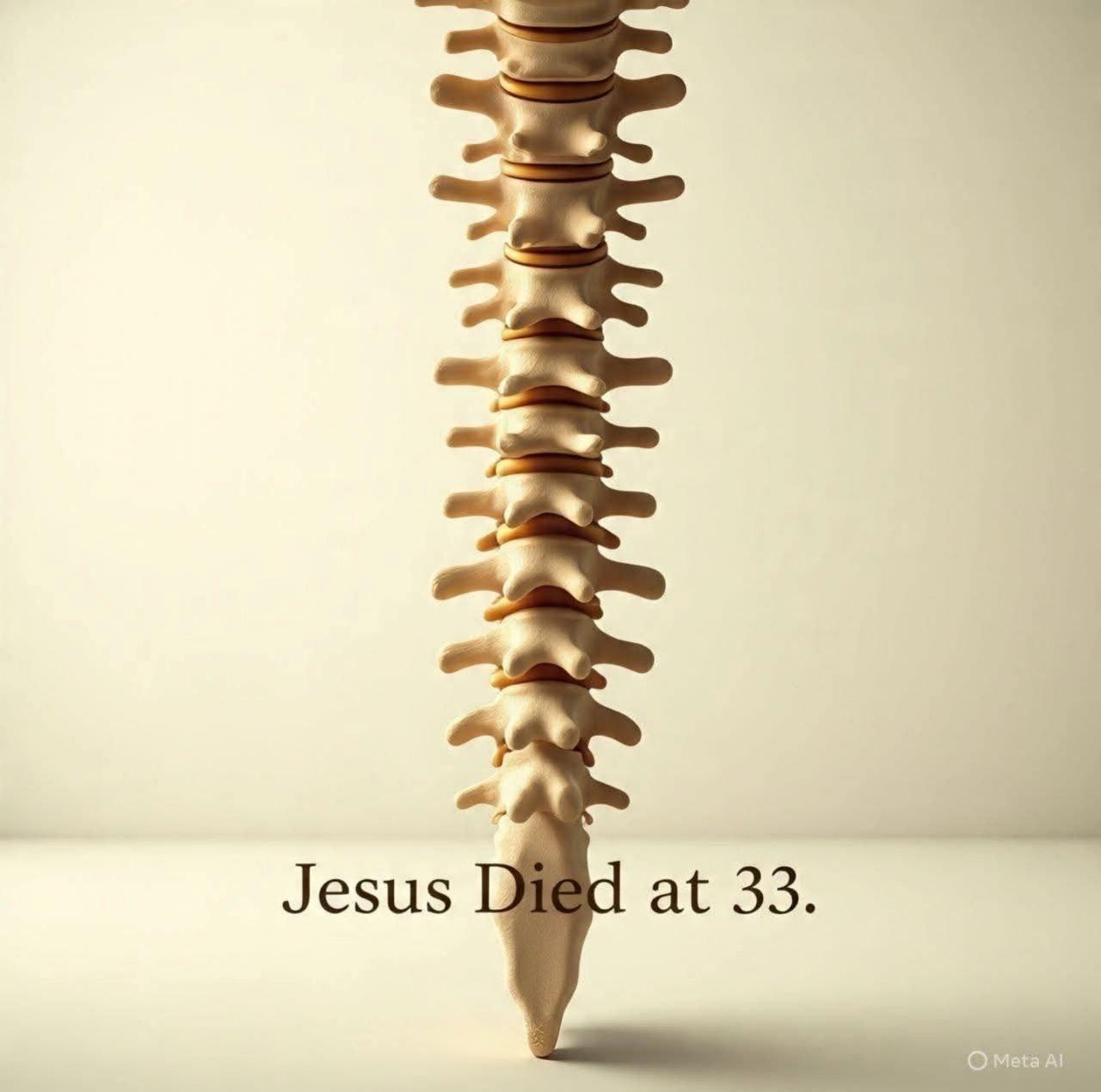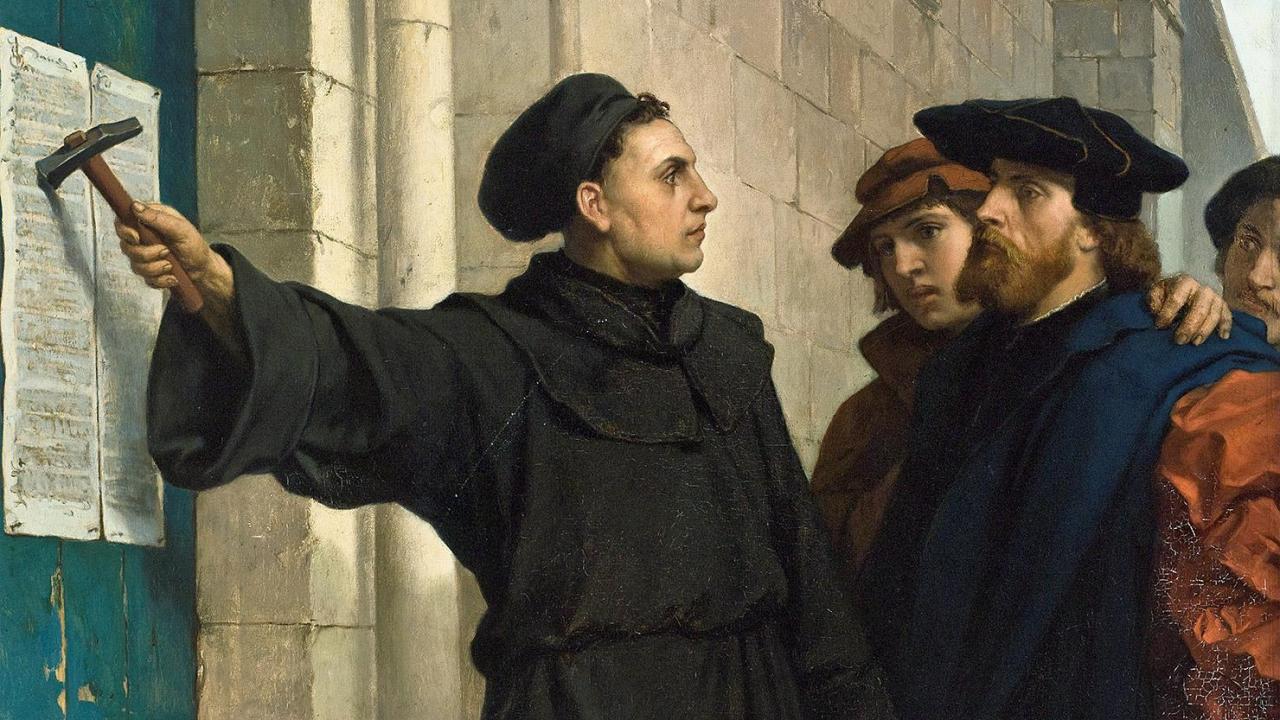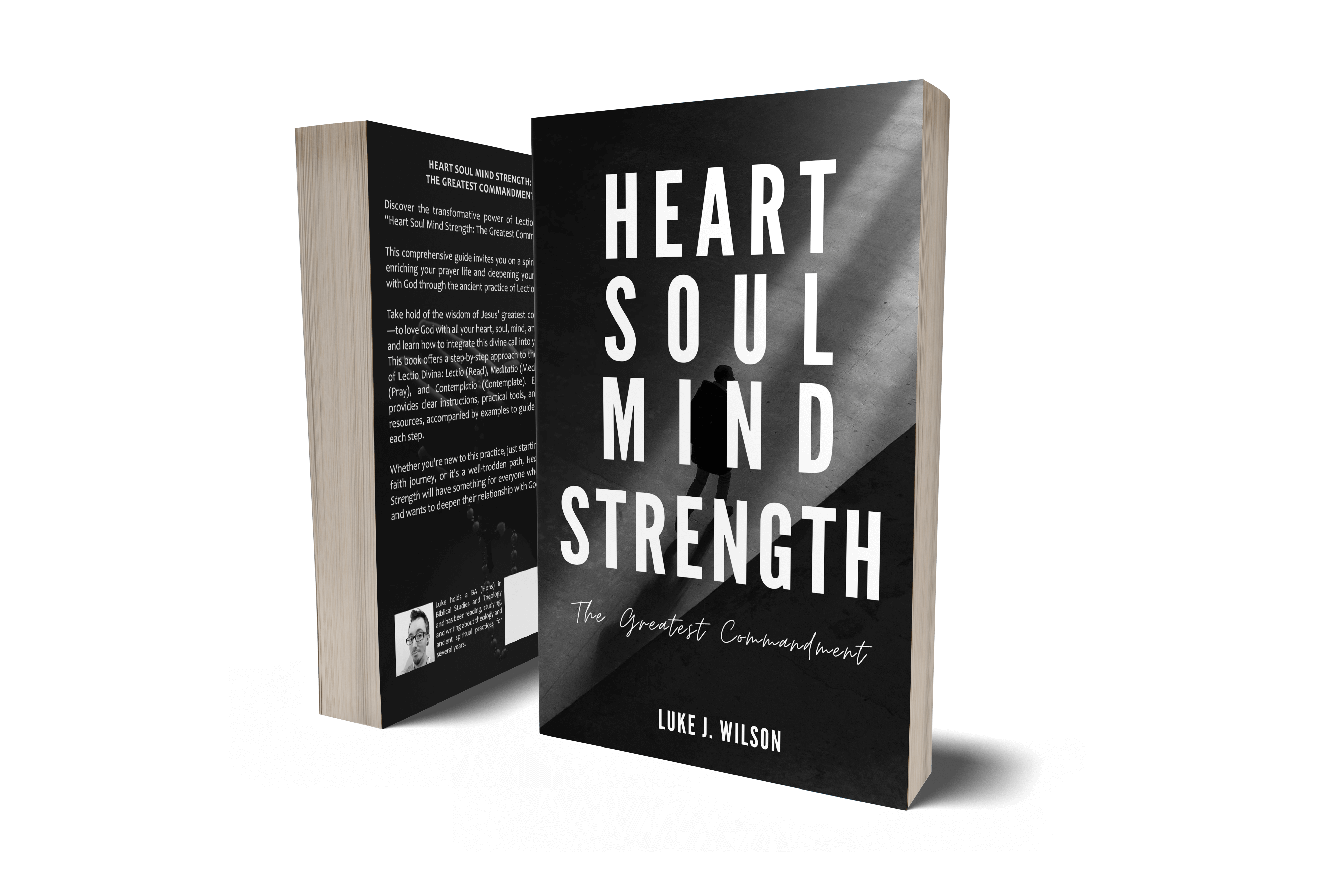The Resurrection as a historical event
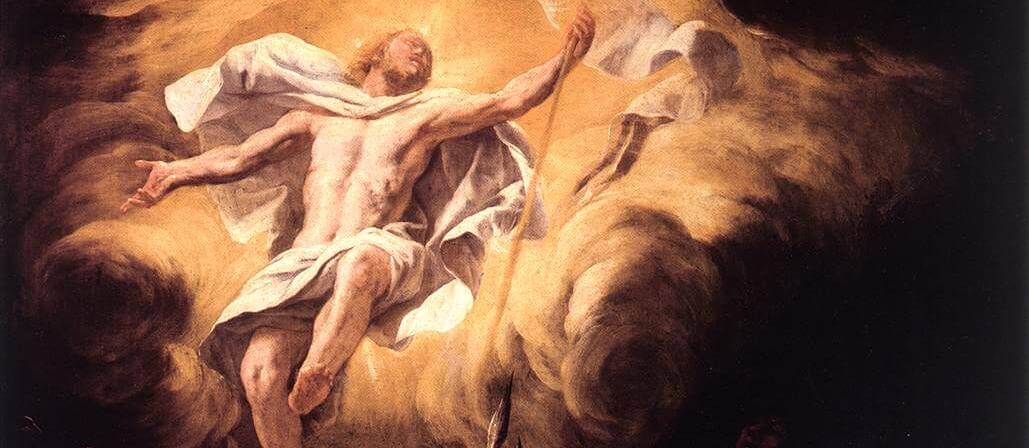
Table of Contents
What with Easter still ringing in our ears, I thought it would be a good time to revisit the topic of resurrection, but from a historical standpoint and why we can trust it as a real, world-changing event. So, what really is the resurrection? How will we be resurrected, and what does it mean for us that Jesus rose again? Let’s explore what this means for us as Christians, and see what the Scriptures say.
Jesus was raised bodily – and historically
Let’s look at the way Jesus was resurrected first, since he is the “firstfruits” of the resurrection (1 Cor 15:20-23).
The historical, bodily resurrection of Christ is central to our faith. Without it, we may as well pack up and go home, which Paul makes clear to the Corinthian church:
1 Corinthians 15:12-15
Now if Christ is proclaimed as raised from the dead, how can some of you say there is no resurrection of the dead? If there is no resurrection of the dead, then Christ has not been raised; and if Christ has not been raised, then our proclamation has been in vain and your faith has been in vain. We are even found to be misrepresenting God, because we testified of God that he raised Christ—whom he did not raise if it is true that the dead are not raised.
I saw a survey recently about this very topic, which suggested that a worrying amount of self-identifying Christians in Britain don’t believe that the resurrection of Jesus happened at all!
Fewer than one-in-three Christians in Britain believe “word-for-word” the Biblical story of Jesus rising from the dead … A survey for the BBC carried out to mark Palm Sunday found that 23 per cent of those calling themselves Christians “do not believe in the resurrection of Jesus from the dead” at all. [Source: telegraph.co.uk]
The resurrection is what makes Christianity unique!
Despite the misinformation that circulates on the internet, Jesus isn’t just a carbon-copy of previous “dying and rising gods” from Egypt and Greece – mainly because none pre-date Christianity!
The consensus among modern scholars — nearly universal — is that there were no dying and rising gods that preceded Christianity. They all post-dated the first century. [Source: y-jesus.com]
It’s this uniqueness and reality which impacts our lives and changes us from within, because the “Spirit of him who raised Jesus from the dead dwells” in us (Rom 8:11)! Think about that for a moment. The power that raised Christ from the dead – that incredible force of God; the very life giving Spirit of the universe, dwells in US!
Christians might do all those [good works], but that is not the core of their faith. It is the result of their faith. They do those things as the musician plays music or the athlete plays his sport. They do those things because they are talented and it gives them joy. So the Christian does these good things because he has been filled with the Spirit of the risen Jesus Christ and he does those things with joy because he wants to. [Source: patheos.com]
Recently, the Shroud of Turin has been in the news again, as it has been recently authenticated again, which shows that it may not be a medieval forgery or piece of art! If you’ve not heard of this “Shroud of Turin”, it’s an ancient burial cloth which bears the image of a man who has been crucified, obviously meaning to be of Jesus. It attracts attention because of its unique nature and that it appears to be a negative image somehow imprinted on the cloth in an inexplicable way:
Giulio Fanti of Padua University ... In 2012 … concluded that an electrical charge in the form of radiation is what likely caused the man’s image to be imprinted on the Shroud. He has also dated the Shroud to the time of Jesus, debunking the flawed carbon-14 testing conducted in 1988.
You can read more about the recent study and its results here: nationalreview.com.
Now obviously, the truth of the resurrection doesn't rely on the Shroud’s authenticity; but if the Shroud is authentic, then it just adds further weight to what Christianity proclaims.
Imagine the level of power that must have happened to make something like that, and that is the same Spirit which lives in us! Just think about it, the death of Jesus caused an earthquake across all of Jerusalem, how much more power was there in the life of God coming back in resurrection? Maybe a similar process of how “nuclear shadows” were created? It’s speculation, but it’s definitely interesting.
Evidence from Paul
Paul talks a lot about Jesus in a spiritual, post-resurrection way; but he does give us a couple of references to the historic Jesus too. In his letter to the Corinth church there is one such example of what happened after the resurrection:
1 Corinthians 15:3-8
(v.6) “Then he appeared to more than five hundred brothers and sisters at one time, most of whom are still alive, though some have died.”
After a quick run-down of the Gospel and how Jesus rose again, Paul highlights a little tidbit of info which is him basically saying, “if you don’t believe me, you can go an ask those people!” He’s saying, “don’t just take my word for it”, because there are living witnesses all over the place who can testify to this fact, not just the small group of Apostles.
Aside from this, Paul’s own life and testimony is a pretty solid proof of the resurrection of Jesus. Paul was taught by the best, had a high position, well respected etc. (Acts 22:3 cf. Acts 5:34; Phil 3:4-6; 2 Cor 11:22); basically he was living the life – and then decided to throw all of that away and endure shipwrecks, beatings, lashings, torture, stoning, hunger and homelessness (see 2 Cor 11:23-27 for the full run-down of Paul’s sufferings!), just for something that may or may not have happened, a convincing story or fable?
No, Paul met the real, risen Christ, and it threw his old life out of the window!
The mystery of the resurrection
We get a small glimpse into the mystery of Jesus’ death and resurrection from Peter and Paul in their letters where Peter explains that Jesus “went and made a proclamation to the spirits in prison” (1 Peter 3:18-19) – “prison” being the place of the dead for those people from times of old who had died. Paul also, in his letter to the Ephesians, follows up on this same event when he says that Jesus, “who descended is the same one who ascended far above all the heavens, so that he might fill all things” and that in doing so “he made captivity itself a captive” (Eph 4: 8-10).
Death itself is captive to Jesus because he holds the keys to Death and Hades (Rev 1:18), and dare I say, this moment when the Light of the World went down into the shadowy darkness of Sheol, it was possibly the first and last time there was ever any light in that gloomy place!
Ignatius gives us an early insight into the understanding of this descending and rising out of that “prison” Hades (or Sheol in Hebrew), by linking it to the event in Mat 27:52 –
“For Says the Scripture, ‘Many bodies of the saints that slept arose,’ their graves being opened. He descended, indeed, into Hades alone, but He arose accompanied by a multitude” – Ignatius to the Trallians, ch. IX
The nature of the resurrection
Firstly, the resurrection is spiritual.
Though spiritual isn’t the only type of resurrection taught in the New Testament, many people think that’s it’s purely a physical act only.
Many times in Scripture when speaking of baptism, it is used and described as a symbolic act of dying and being raised with Christ into a new creation, despite keeping our “old” bodies in the meantime (see Col 2:12; Col 3:1; Eph 2:5-6; Rom 6:4). This, I believe, is why there was such an emphasis on the importance of baptism in the early Church, and why it’s something sacred we should also highly esteem and not take lightly.
While these verses (and many others) make it clear that through baptism we die to our old selves and are raised anew in Christ, we must also understand that this prefigures our future resurrection when we finally “put on immortality” (1 Cor 15:53-54). Though we will eventually die physically in the body, we won't die at all because death is defeated and it has no sting nor power over us!
In ancient times (and probably still today) accepting the resurrection of Jesus, and our future selves, was a major sticking point for new converts, or those interested in the faith. Even the Jewish leaders couldn’t agree in on this let alone Gentiles! Resurrection was a totally new concept to expect to receive personally, or to happen at all; even the Jewish sect of the Sadducees didn’t believe it – just see Acts 23:8 for that.
Paul spends quite some time on the resurrection and explaining what it means and how it will be, though it is a topic that will always be limited by our human understanding. This is why the nature of the resurrection is always contrasted with the putting on of new clothes or in building a new tent, or the sowing of seeds. Even if you don’t have a farming background, it’s still easy to understand the concept of what is being said here in terms of our physical, mortal body being removed like an outer garment, and being replaced with something better (1 Cor 15:44; 2 Cor 5:1-2).
It is quite rightly a mystery, as Paul says!
Justin Martyr gives a good analogy in his great work, First Apology, when trying to explain this concept of the resurrection to a Roman emperor, and contrasts it with “human seed” (ie. sperm);
[If I] were to show you human seed and a picture of a man, and were to say with confidence that from such a substance such a being could be produced, would you believe before you saw the actual production?
– St. Justin Martyr: First Apology
Basically, if you’d never known human growth, and someone showed you a drop of fluid and a photo of an adult and said one produced the other, would you believe it if you hadn’t already witnessed it to be true? In the same way then, the resurrection happens, and it can only be accepted by those who are willing to believe something which seems impossible, but will “in God's appointed time, rise again and put on incorruption”.
The resurrection is more than physical
I prefer to use the word “glorified” with regards to our resurrection because saying “physical” just isn't adequate enough to describe the mystery of what our bodies become.
Our new bodies will be similar to our current physical bodies, but not the same – not limited like our earthly bodies are; in the same way Jesus was changed, we too shall also be transformed “into the likeness of His glorious body” (Phil 3:21)!
In the same way that spiritual beings such as angels can become “physical” in appearance, they aren't the same as we are now. Much like when Jesus ascended to the Father and later appeared to his disciples, he was no longer the same human Jesus they once knew (2 Cor 5:16).
Despite eating and drinking (Luke 24:39-43) and seeming the same as before, he now appeared in their midst behind locked doors (John 20:19); travelled with people in an unrecognisable form – or could control other’s perceptions of him until required (Luke 24:15-16), and the could also disappear in the blink of an eye (Luke 24:31)!
Christ was raised physically, initially, but then his body was different. Glorified, not human.
Origen captures this concept well in his book Contra Celsus;
“After his resurrection, Christ existed in an intermediate state, as it were. For it was somewhere between the physicalness of the body He had before his sufferings and the appearance of a soul uncovered by such a body. It was for this reason that … Jesus came and stood in [the disciples] midst, even though the doors were shut.”
– Origen, Contra Celsus, Book II, ch.62
So what is the resurrection? It is a mystery of something which is deeply spiritual, yet also joined in the flesh of renewed bodies. It is hope for our future and peace over death, and encouragement for those who have had people they love die (1 Thess 4:13-14).
It is something we can rejoice in now through our baptism and new spiritual life in Christ by his Spirit within us, which makes us a new creation (2 Cor 5:17).
It is strange co-joining of this world and the heavenly realms where, despite still being in our tarnished flesh, we are also seated with Christ up high (Eph 2:6), waiting until the day in which we finally put on immortality and join our Lord in a restored creation.
Amen!
Leave a comment Like Back to Top Seen 1.2K times Liked 0 times
Enjoying this content?
Support my work by becoming a patron on Patreon!
By joining, you help fund the time, research, and effort that goes into creating this content — and you’ll also get access to exclusive perks and updates.
Even a small amount per month makes a real difference. Thank you for your support!
Subscribe to Updates
If you enjoyed this, why not subscribe to free email updates and join over 864 subscribers today!
My new book is out now! Order today wherever you get books
Recent Posts
Luke J. Wilson | 19th August 2025 | Fact-Checking
A poetic post has been circulating widely on Facebook, suggesting that our anatomy mirrors various aspects of Scripture. On the surface it sounds inspiring, but when we take time to weigh its claims, two main problems emerge. The viral post circulating on Facebook [Source] First, some of its imagery unintentionally undermines the pre-existence of Christ, as if Jesus only “held the earth together” for the 33 years of His earthly life. Second, it risks reducing the resurrection to something like biological regeneration, as if Jesus simply restarted after three days, instead of being raised in the miraculous power of God. Alongside these theological dangers, many of the scientific claims are overstated or symbolic rather than factual. Let’s go through them one by one. 1. “Jesus died at 33. The human spine has 33 vertebrae. The same structure that holds us up is the same number of years He held this Earth.” The human spine does generally have 33 vertebrae, but that number includes fused bones (the sacrum and coccyx), and not everyone has the same count. Some people have 32 or 34. More importantly, the Bible never says Jesus was exactly 33 when He died — Luke tells us He began His ministry at “about thirty” (Luke 3:23), and we know His public ministry lasted a few years, but His precise age at death is a tradition, not a biblical statement. See my other recent article examining the age of Jesus here. Theologically, the phrase “the same number of years He held this Earth” is problematic. Jesus did not hold the world together only for 33 years. The eternal Word was with God in the beginning (John 1:1–3), and “in Him all things hold together” (Colossians 1:17). Hebrews says He “sustains all things by His powerful word” (Hebrews 1:3). He has always upheld creation, before His incarnation, during His earthly ministry, and after His resurrection. To imply otherwise is to risk undermining the pre-existence of Christ. 2. “We have 12 ribs on each side. 12 disciples. 12 tribes of Israel. God built His design into our bones.” Most people do have 12 pairs of ribs, though some are born with an extra rib, or fewer. The number 12 is certainly biblical: the 12 tribes of Israel (Genesis 49), the 12 apostles (Matthew 10:1–4), and the 12 gates and foundations of the New Jerusalem (Revelation 21). But there’s no biblical connection between rib count and these symbolic twelves. This is a case of poetic association, not design woven into our bones. The only real mention of ribs in Scripture is when Eve is created from one of Adam’s ribs in Genesis 2:21–22, which has often led to the teaching in some churches that men have one less rib than women (contradicting this new claim)! 3. “The vagus nerve runs from your brain to your heart and gut. It calms storms inside the body. It looks just like a cross.” The vagus nerve is real and remarkable. It regulates heart rate, digestion, and helps calm stress, and doctors are even using vagus nerve stimulation as therapy for epilepsy, depression, and inflammation showing it really does “calm storms” in the body. But it does not look like a cross anatomically. The language about “calming storms” may echo the way Jesus calmed the storm on the Sea of Galilee (Mark 4:39), but here again the poetic flourish stretches science (and Scripture) beyond what’s accurate. 4. “Jesus rose on the third day. Science tells us that when you fast for 3 days, your body starts regenerating. Old cells die. New ones are born. Healing begins. Your body literally resurrects itself.” There’s a serious theological problem here. To equate Jesus’ resurrection with a biological “regeneration” after fasting is to misrepresent what actually happened. Fasting can indeed trigger cell renewal and immune repair, but it cannot bring the dead back to life. It’s still a natural process that happens...
Luke J. Wilson | 08th July 2025 | Islam
“We all worship the same God”. Table of Contents 1) Where YHWH and Allah Appear Similar 2) Where Allah’s Character Contradicts YHWH’s Goodness 3) Where Their Revelations Directly Contradict Each Other 4) YHWH’s Love for the Nations vs. Allah’s Commands to Subjugate 5) Can God Be Seen? What the Bible and Qur’an Say 6) Salvation by Grace vs. Salvation by Works Conclusion: Same God? Or Different Revelations? You’ve heard it from politicians, celebrities, and even some pastors. It’s become something of a modern mantra, trying to shoehorn acceptance of other beliefs and blend all religions into one, especially the Abrahamic ones. But what if the Bible and Qur’an tell different stories? Let’s see what their own words reveal so you can judge for yourself. This Tweet recently caused a stir on social media 1) Where YHWH and Allah Appear Similar Many point out that Jews, Christians, and Muslims share a belief in one eternal Creator God. That’s true — up to a point. Both the Bible and Qur’an describe God as powerful, all-knowing, merciful, and more. Here’s a list comparing some of the common shared attributes between YHWH and Allah, with direct citations from both Scriptures: 26 Shared Attributes of YHWH and Allah According to the Bible (NRSV) and the Qur’an Eternal YHWH: “From everlasting to everlasting you are God.” — Psalm 90:2 Allah: “He is the First and the Last…” — Surah 57:3 Creator YHWH: “In the beginning God created the heavens and the earth.” — Genesis 1:1 Allah: “The Originator of the heavens and the earth…” — Surah 2:117 Omnipotent (All-Powerful) YHWH: “Nothing is too hard for you.” — Jeremiah 32:17 Allah: “Allah is over all things competent.” — Surah 2:20 Omniscient (All-Knowing) YHWH: “Even before a word is on my tongue, O LORD, you know it.” — Psalm 139:4 Allah: “He knows what is on the land and in the sea…” — Surah 6:59 Omnipresent (Present Everywhere) YHWH: “Where can I go from your Spirit?” — Psalm 139:7–10 Allah: “He is with you wherever you are.” — Surah 57:4 Holy YHWH: “Holy, holy, holy is the LORD of hosts.” — Isaiah 6:3 Allah: “The Holy One (Al-Quddus).” — Surah 59:23 Just YHWH: “A God of faithfulness and without injustice.” — Deuteronomy 32:4 Allah: “Is not Allah the most just of judges?” — Surah 95:8 Merciful YHWH: “The LORD, merciful and gracious…” — Exodus 34:6 Allah: “The Most Gracious, the Most Merciful.” — Surah 1:1 Compassionate YHWH: “As a father has compassion on his children…” — Psalm 103:13 Allah: “He is the Forgiving, the Affectionate.” — Surah 85:14 Faithful YHWH: “Great is your faithfulness.” — Lamentations 3:22–23 Allah: “Indeed, the promise of Allah is truth.” — Surah 30:60 Unchanging YHWH: “For I the LORD do not change.” — Malachi 3:6 Allah: “None can change His words.” — Surah 6:115 Sovereign YHWH: “The LORD has established his throne in the heavens…” — Psalm 103:19 Allah: “Blessed is He in whose hand is dominion…” — Surah 67:1 Loving YHWH: “God is love.” — 1 John 4:8 Allah: “Indeed, my Lord is Merciful and Affectionate (Al-Wadud).” — Surah 11:90 Forgiving YHWH: “I will not remember your sins.” — Isaiah 43:25 Allah: “Allah forgives all sins…” — Surah 39:53 Wrathful toward evil YHWH: “The LORD is a jealous and avenging God…” — Nahum 1:2 Allah: “For them is a severe punishment.” — Surah 3:4 One/Unique YHWH: “The LORD is one.” — Deuteronomy 6:4 Allah: “Say: He is Allah, One.” — Surah 112:1 Jealous of worship YHWH: “I the LORD your God am a jealous God.” �...
Luke J. Wilson | 05th June 2025 | Blogging
As we commemorated the 500th anniversary of the Protestant Reformation this year, the familiar image of Martin Luther striding up to the church door in Wittenberg — hammer in hand and fire in his eyes — has once again taken centre stage. It’s a compelling picture, etched into the imagination of many. But as is often the case with historical legends, closer scrutiny tells a far more nuanced and thought-provoking story. The Myth of the Door: Was the Hammer Ever Raised? Cambridge Reformation scholar Richard Rex is one among several historians who have challenged the romanticised narrative. “Strangely,” he observes, “there’s almost no solid evidence that Luther actually went and nailed them to the church door that day, and ample reasons to doubt that he did.” Indeed, the first image of Luther hammering up his 95 Theses doesn’t appear until 1697 — over 180 years after the fact. Eric Metaxas, in his recent biography of Luther, echoes Rex’s scepticism. The earliest confirmed action we can confidently attribute to Luther on 31 October 1517 is not an act of public defiance, but the posting of two private letters to bishops. The famous hammer-blow may never have sounded at all. Conflicting Accounts Philip Melanchthon, Luther’s successor and first biographer, adds another layer of complexity. He claimed Luther “publicly affixed” the Theses to the door of All Saints’ Church, but Melanchthon wasn’t even in Wittenberg at the time. Moreover, Luther himself never mentioned posting the Theses publicly, even when recalling the events years later. Instead, he consistently spoke of writing to the bishops, hoping the matter could be addressed internally. At the time, it was common practice for a university disputation to be announced by posting theses on church doors using printed placards. But no Wittenberg-printed copies of the 95 Theses survive. And while university statutes did require notices to be posted on all church doors in the city, Melanchthon refers only to the Castle Church. It’s plausible Luther may have posted the Theses later, perhaps in mid-November — but even that remains uncertain. What we do know is that the Theses were quickly circulated among Wittenberg’s academic elite and, from there, spread throughout the Holy Roman Empire at a remarkable pace. The Real Spark: Ink, Not Iron If there was a true catalyst for the Reformation, it wasn’t a hammer but a printing press. Luther’s Latin theses were swiftly reproduced as pamphlets in Basel, Leipzig, and Nuremberg. Hundreds of copies were printed before the year’s end, and a German translation soon followed, though it may never have been formally published. Within two weeks, Luther’s arguments were being discussed across Germany. The machinery of mass communication — still in its relative infancy — played a pivotal role in what became a theological, political, and social upheaval. The Letters of a Conscientious Pastor Far from the bold revolutionary of popular imagination, Luther appears in 1517 as a pastor deeply troubled by the abuse of indulgences, writing with respectful concern to those in authority. In his letter to Archbishop Albrecht of Mainz, he humbly addresses the archbishop as “Most Illustrious Prince,” and refers to himself as “the dregs of humanity.” “I, the dregs of humanity, have so much boldness that I have dared to think of a letter to the height of your Sublimity,” he writes — hardly the voice of a man trying to pick a fight. From Whisper to Roar Luther’s initial appeal through formal channels was, predictably, ignored. He was advised not to make trouble. But as opposition mounted and corruption remained unchecked, the once quiet reformer grew louder. His theological convictions deepened, and his public persona evolved. The lion did eventually roar — but not on October 31. A Catholic Reformer, Not a Protestant Founder It’s vital to remem...
Luke J. Wilson | 20th May 2025 | Islam
You are not alone. Around the world, many Muslims — people who already believe in one God, pray, and seek to live righteously — are drawn to know more about Jesus (ʿĪsā in Arabic). Some have heard He is more than a prophet. Some have sensed His presence in a dream or vision. And some simply long to know God more deeply, personally, and truly. So what does it mean to become a Christian? And how can you take that step? This guide is for you. 1. What Christians Believe About God and Jesus ➤ One God, Eternal and Good Christians believe in one God — the same Creator known to Abraham, Moses, and the prophets. But we also believe God is more personal and relational than many realise. In His love, He has revealed Himself as Father, Son (Jesus), and Holy Spirit — not three gods, but one God in three persons. ➤ Jesus Is More Than a Prophet Muslims honour Jesus as a great prophet, born of the virgin Mary. Christians also affirm this — but go further. The Bible teaches that Jesus is the Word of God (Kalimat Allāh), who became flesh to live among us. He performed miracles, healed the sick, raised the dead — and lived without sin.Jesus came not just to teach but to save — to bring us back to God by bearing our sins and rising again in victory over death. 2. Why Do We Need Saving? ➤ The Problem: Sin All people — no matter their religion — struggle with sin. We lie, get angry, feel jealous, act selfishly, or fail to love God fully. The Bible says: “All have sinned and fall short of the glory of God.” (Romans 3:23) Sin separates us from God. And no matter how many good deeds we do, we can never make ourselves perfect or holy before Him. ➤ The Solution: Jesus Because God loves us, He did not leave us in our sin. He sent Jesus, His eternal Word, to live as one of us. Jesus died willingly, offering His life as a sacrifice for our sins, then rose again on the third day. “But God proves his love for us in that while we still were sinners Christ died for us.” (Romans 5:8) 3. How Do I Become a Christian? Becoming a Christian is not about joining a Western religion. It’s about entering a relationship with God through faith in Jesus Christ. Here is what the Bible says: ✝️ 1. Believe in Jesus Believe that Jesus is the Son of God, that He died for your sins, and that He rose again. “If you confess with your lips that Jesus is Lord and believe in your heart that God raised him from the dead, you will be saved.” (Romans 10:9) 💔 2. Repent of Your Sins Turn away from sin and ask God to forgive you. This is called repentance. It means being truly sorry and choosing a new way. “Repent therefore, and turn to God so that your sins may be wiped out.” (Acts 3:19) 💧 3. Be Baptised Jesus commands His followers to be baptised in water as a sign of their new life. Baptism represents washing away your old life and rising into a new one with Jesus. “Repent and be baptised every one of you in the name of Jesus Christ so that your sins may be forgiven.” (Acts 2:38) 🕊️ 4. Receive the Holy Spirit When you believe in Jesus, God gives you the Holy Spirit to live within you, guiding you, comforting you, and helping you follow His will. “You received the Spirit of adoption, by whom we cry, ‘Abba! Father!’” (Romans 8:15) 🧎 5. Begin a New Life As a Christian, you are born again — spiritually renewed. You begin to grow in faith, love, and holiness. You read the Bible, pray, fast, and gather with other believers. Your life is no longer your own; you now live for God. 4. What Does a Christian Life Look Like? Jesus said: “If anyone wants to become my followers, let them deny themselves and take up their cross and follow me.” (Matthew 16:24) This means: Loving God with all your heart Loving your neighbour — even your enemies Forgiving others ...


